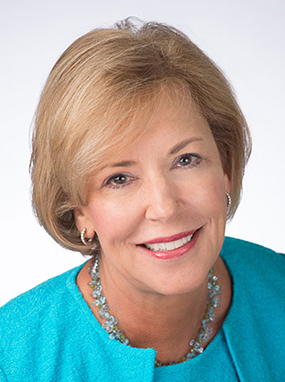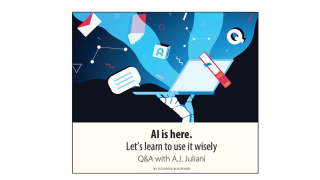The longer I serve in education, the more I realize I have so much to learn about learning and the kinds of cultures that make it central to the daily work of an organization. As part of our work with the PD Brain Trust on redesigning professional development, Learning Forward is looking outside of education to hear from learning leaders in other sectors. Last month, we had the opportunity to hear about SAS, a world leader in business analytics software.
We learned that SAS describes itself as a knowledge company. It certainly is a successful one. With almost 14,000 employees worldwide, more than $3 billion in revenue last year, and continuous revenue growth since its founding in 1976, SAS serves 93 of the top 100 companies in the Fortune Global 500.
Just as we are experiencing in education, changes in the world and in technology have ongoing implications for the SAS workforce and the knowledge and skills required to succeed. SAS leaders recognize that they need meaningful recruitment and retention strategies to keep the most effective professionals.
SAS is intentional in every aspect of its human capital experience to build the environment that is central to its success. I was most struck by several cultural fundamentals our SAS visitors shared with us, and I want to focus on just three. Think about how important these are to the most successful schools, school systems, and organizations.
Culture matters: SAS has among its guiding principles mutual respect and empowerment. They also prioritize celebrations to bring energy to the workplace and recognize employees. When I think about schools with high levels of collective responsibility for all students, I know that the culture in those workplaces is central. What actions do successful education leaders undertake to create cultures that nurture success?
Learning for all: SAS tailors learning to each stage of the career pathway, from student programs and early career academies to learning for experienced professionals. Leaders at SAS know the importance of stimulating minds. They intentionally build community among their millennial employees and find ways to connect them with key leaders in the organization. How can our learning communities and networks in schools serve as places for not only problem solving and learning, but also ongoing support for each individual striving to achieve ever-higher goals as a professional?
Growth mindsets: We heard SAS reference Carol Dweck and the importance of growth versus fixed mindsets. SAS leaders know that a professional’s skills must continue to develop, so they look for the right mindset for growth. That made me reflect on how often I’ve seen school and system leaders who value growth mindsets for both their students and educators. That approach is not universal. How can we elevate that conversation in more places?
I don’t see how any educational organization with such elements at its foundation could fail. Why do we find it so challenging to achieve?
This post originally appeared in Learning Forward’s PD Watch.








